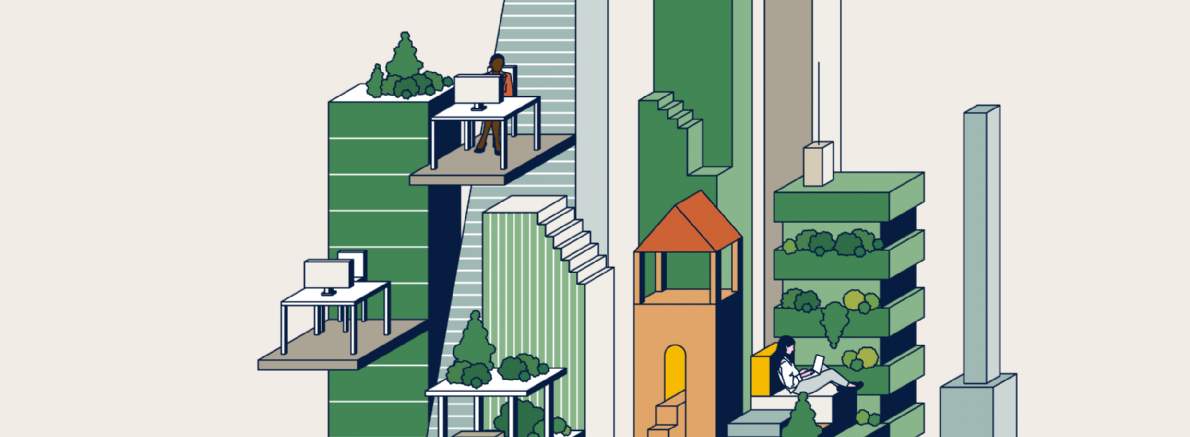1. THE RETURN OF LONG-HAUL CAPITAL
The past two years have seen a marked change in the make-up of the buyers of commercial property investments in the UK. While the proportion of the capital invested in the UK remained at around its long-term average (51% in 2021), the point of origin of this money has changed.
In the decade prior to the Covid-19 crisis, inbound investment from the Far East averaged 25% of the total non-domestic investment, while the Middle East averaged 13%. However, in 2021 these proportions fell to 11% and 7% respectively. The fall in this very long-haul capital was compensated for by a slight rise in investment from Europe, and a huge increase in the proportion coming from the USA (from an average of 26% pre-crisis to 44% in 2020 and 2021).
Looking ahead to 2022, we expect that the gradual removal of travel restrictions will lead to a return to normal levels in inward investment from the Middle East and Far East, and this will return UK investment volumes to pre-crisis levels.
Commercial pressures
Mat Oakley examines prospects of a sector recovery set against the race to carbon neutrality, the policy environment created by Covid-19 and the only partially completed Brexit process.
2. UPWARD PRESSURE ON PRICING OF BOTH RISK-OFF AND VALUE-ADD ASSETS
The additional capital that we expect to enter the market in 2022 will further intensify some of the trends we saw in the market last year. Middle and Far Eastern investors in particular have previously demonstrated a heavy bias towards risk off investments, and we expect this will continue to support the low prime yields that are being seen in both London offices and UK logistics.
Value-add opportunities, particularly in London and some regional office markets, and once again in logistics, have also seen upward pressure on pricing in 2021. We expect this to continue into 2022 and beyond. Some regional office markets are now looking exceptionally undersupplied with Grade A offices, and the opportunity this presents to risk-loving investors will be considerable.
The next five years will see an increasing convergence between the main sectors as capital values start to rise in some parts of the retail market, and their rate of growth slows in the industrial sector
3. THE RISE OF ALTERNATIVES
One all-pervading theme for 2022 and beyond will be the challenge and opportunity that is related to decarbonising the built environment. This charge is being led by developers and investors, but lenders and large occupiers are close behind. As we explored in our Real Estate and the Carbon Challenge report, the challenges are considerable. Nearly 2.5 billion square feet of retail and office space needs upgrading over the next decade, and we cannot just rely on the market to drive change in sectors and locations.
Policy will have to be brought to bear to drive change where the end returns are not high enough to support the capital expenditure. However, in much of the office and industrial markets in and around the UK’s major cities, we believe that the desire from investors and occupiers to do better will be enough to drive change.
We need to get better at monitoring, reporting and sharing best practice in this area. We also perhaps need to stop asking the wrong questions, such as “will a tenant pay more rent for greener space?”.
4. THE OFFICE POST-COVID-19
Offices are the single largest segment of the commercial property investment market, typically accounting for nearly 40% of all investment activity. However, the fact that the Brexit negotiations around services are yet to be finalised, and that there has been a less than dramatic pace of return to the office by UK workers, does start to raise questions about whether this sector will retain its dominant position in the future.
Brexit remains a risk to many parts of the UK commercial property market, but London offices in particular remain heavily exposed to any reduction in the UK’s attractiveness as a financial hub or European headquarters destination.
Agile working is also definitely here to stay, but we cannot deny that it will have a dampening effect on the growth in demand for office space. While we expect that current typical 25% occupancy of offices will rise in 2022, we do not expect that it will return to pre-Covid-19 levels. To a degree, this fall in need will be compensated for by rising headcount and space per capita, but we do believe that less desirable offices in less accessible locations will become even harder to let.
5. THE RE-EMERGENCE OF RETAIL AND REBALANCING OF TOTAL RETURNS
Stock selection based on total returns has been straightforward in recent years, with retail averaging -8% in 2019 and industrial averaging +7%. However, the next five years will see an increasing convergence between the main sectors as capital values start to rise in some parts of the retail market, and their rate of growth slows in the industrial sector.
These trends, combined with the generally higher income return that is present in retail, will mean that by the end of our five-year forecast period there will be less than 100bps spread between the average total return on retail and that on industrials, with offices sitting between the two. So, what should you buy? The key word earlier in this paragraph is ‘average’, and we expect to see a much wider spread between the best and worst in offices and retail than in industrials.
In retail, we continue to favour retail warehousing, though across all retail there will be a shortage of high-rated ESG compliant assets, and these will be increasingly hotly sought-after by global retailers. Logistics will generally remain the safest sector, albeit with its own environmental challenges. For offices, location and ESG criteria will remain the key to outperforming the average.

.jpg)
.jpg)
.jpg)
.jpg)
.jpg)